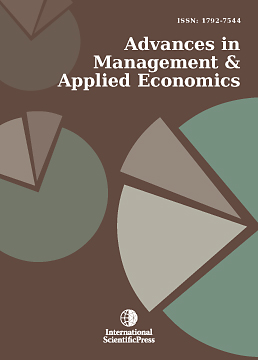Advances in Management and Applied Economics
Investigating the Relationship Between Canada’s Environmental Quality and GDP-Alternative Measures: An Error Correction Approach
-
 [ Download ]
[ Download ]
- Times downloaded: 8681
Abstract
This paper investigates the long-run relationship between Canada’s total greenhouse gas emissions (as an indicator of environmental quality) and economic development captured by gross domestic product (GDP) and GDP-alternative measures (which are argued to be more representative of the wider-scale economic progress, Rani & Mandal, 2020). The three GDP-alternative measures assessed were gross national disposable income (GNDI), human development index (HDI), and index of economic freedom (IEF). Time series properties of per capita greenhouse gas emissions (GHGpc) were evaluated. Augmented Dickey Fuller stationarity test was performed for GHGpc, after which, Johansen tests were performed to evaluate cointegration between GHGpc and the economic growth measures. Error correction models were run to evaluate the long-run behavior of GHGpc with per capita GDP and GNDI (GDPpc and GNDIpc, respectively), HDI, and IEF. GHGpc was found to be cointegrated with both GDPpc and all the GDP-alternative indicators. The paper contributes to the existing literature by demonstrating that Canada’s per capita GHG emission has a long-run relationship with both GDP and GDP-alternative indicators. This study represents the first assessment in the body of knowledge of the relationship between Canada’s national-level total GHG emissions and GDP-alternative measures.
Keywords: Greenhouse gas, Stationarity, Cointegration, Error correction, GDP-alternatives.
